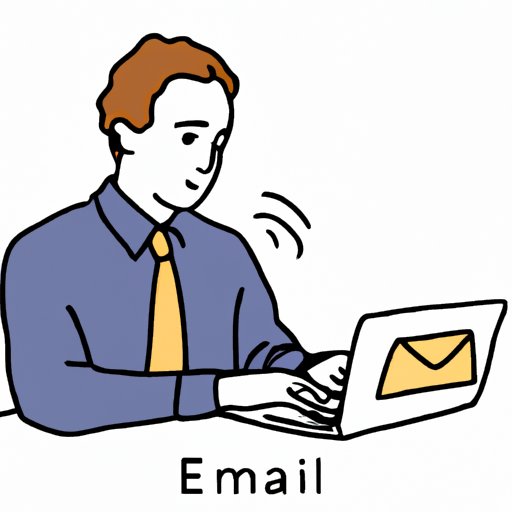How to Write a Professional Email: Tips for Making a Strong Impression
As the world becomes increasingly digital, email remains one of the most common forms of communication in the business world. However, with the volume of email we all receive, it’s important to make sure your emails stand out and make a positive impression. In this article, we’ll offer tips for writing professional emails that make a strong impression on your recipients.
Start with a strong subject line
The subject line of your email is the first thing your recipient sees, so it’s important to make it clear and specific. A strong subject line helps grab your recipient’s attention and give them an idea of what your email is about. Keep your subject line brief and to the point, but also informative enough to give an accurate representation of the content of your email.
Make sure that you avoid vague subject lines such as, “Request” or “Regarding our meeting”. Instead, use strong, specific subject lines such as: “Action Required: Contract Review”, “Upcoming Meeting on [date]: Agenda and RSVP instructions” or “Proposal for [insert a project name]”.
Keep your message concise
Most people’s inboxes are overflowing, so it’s essential that your emails are concise, clear, and to the point. Respect your recipients’ time by making your emails easy to skim and understand. Use short paragraphs, bullet points and formatting tools to structure your email text and help your readers get the gist of your message quickly.
Be sure to organize your thoughts and present them in a logical manner. Start with your purpose and end with a clear call-to-action so that your recipients know exactly what to do next. By doing so, you’ll reinforce the professionalism of your email and make it more effective.
Use professional language
When it comes to professional writing, it’s important to use appropriate language. This means avoiding emoticons, abbreviations, slang, jargon, or excessive punctuation that might make your email seem unprofessional and difficult to read. Instead, use more formal language by writing complete sentences with proper grammar and punctuation.
Remember, you don’t have to be overly formal to be professional. You can strike a tone somewhere between conversational and formal. Use a friendly, yet professional tone that shows respect, and always proofread your work before hitting “send”.
Avoid using jargon
It’s essential that you use simple and straightforward language in your emails. Avoid using industry jargon, technical language, or acronyms that your recipients may not understand. If you have to use technical language, define your terms and provide examples so that your recipients can follow along.
By using clear, plain language, you’ll ensure that your recipients understand the content of your emails and reduce the risk of misunderstandings or miscommunications. This way, you can leave less room for confusion and have your recipient act on it appropriately.
Proofread for errors
Nothing undermines your professionalism more than misspelling or grammatical errors in your emails. Always take the time to proofread your emails, or better yet, use an online tool like Grammarly to catch errors and improve your writing.
Address the recipient appropriately
Make sure you use appropriate salutations when addressing your recipients. If you’re writing to someone for the first time, address them by their full name with their title. If you’re unsure of their title, it’s better to be more formal and use “Mr.”, “Ms.”, “Dr.”, or “Professor”.
Once you’ve developed a relationship, follow their preference. For instance, if they respond to your email with their first name and say, “call me John,” feel free to address them that way in your next email. It’s always better to be too formal rather than too casual in your email correspondence.
Close your email politely
End your email with a professional, polite, and appropriate closing that fits the tone and content of your message. Examples of professional closings include, “Best regards”, “Sincerely”, “Yours truly”, “Thank you”, and “Warmly”.
Don’t forget to provide your contact information such as your name, company name, job title, and phone number in your email signature so recipients can easily contact you.
Conclusion
Writing professional emails may seem like a daunting task, but it’s something we all need to do in our daily lives. By following these tips, you’ll be able to craft emails that grab the recipient’s attention, communicate your message clearly, and make a strong impression. Give yourself the respect of self-checking or use Grammarly before you hit the “send” button. With practice, your professional emails will become an important tool for building relationships and advancing your career.
